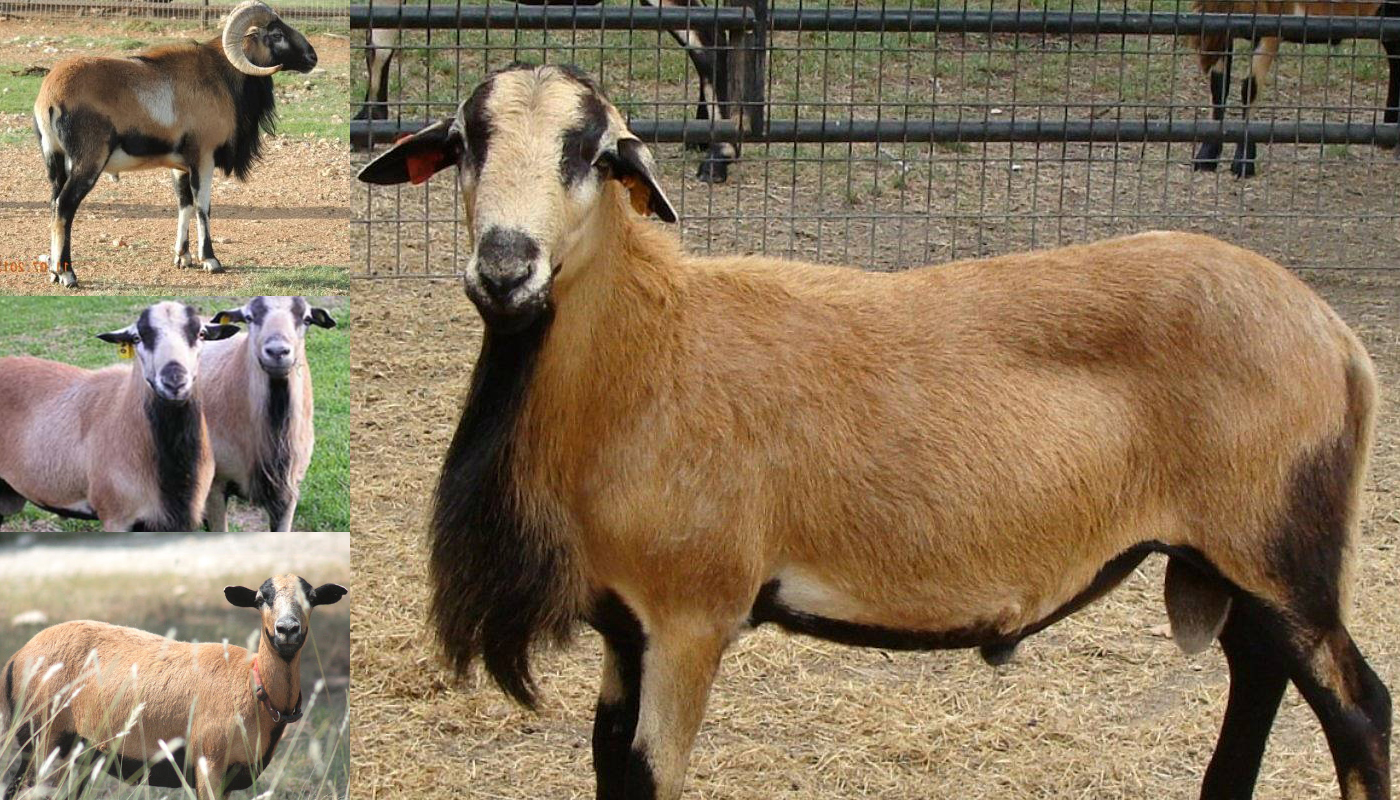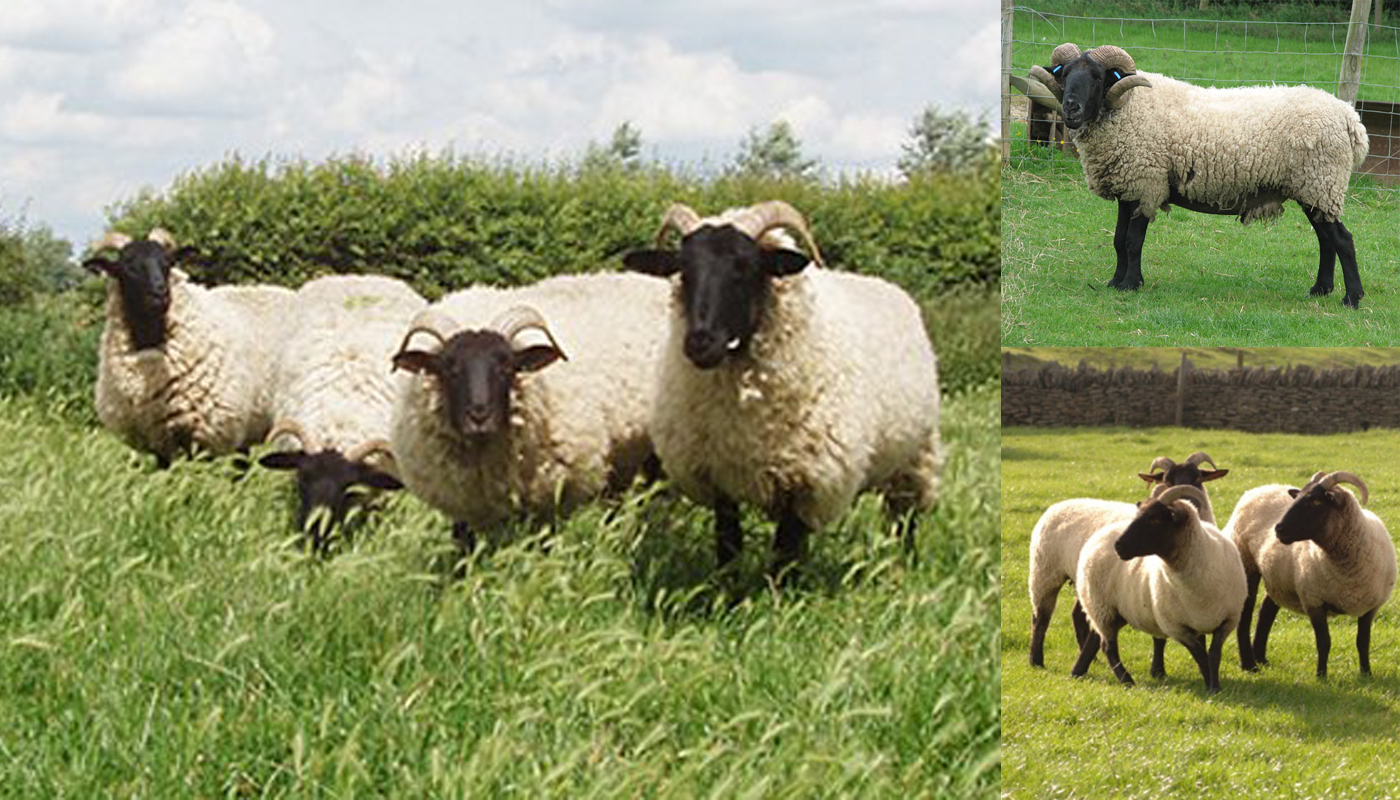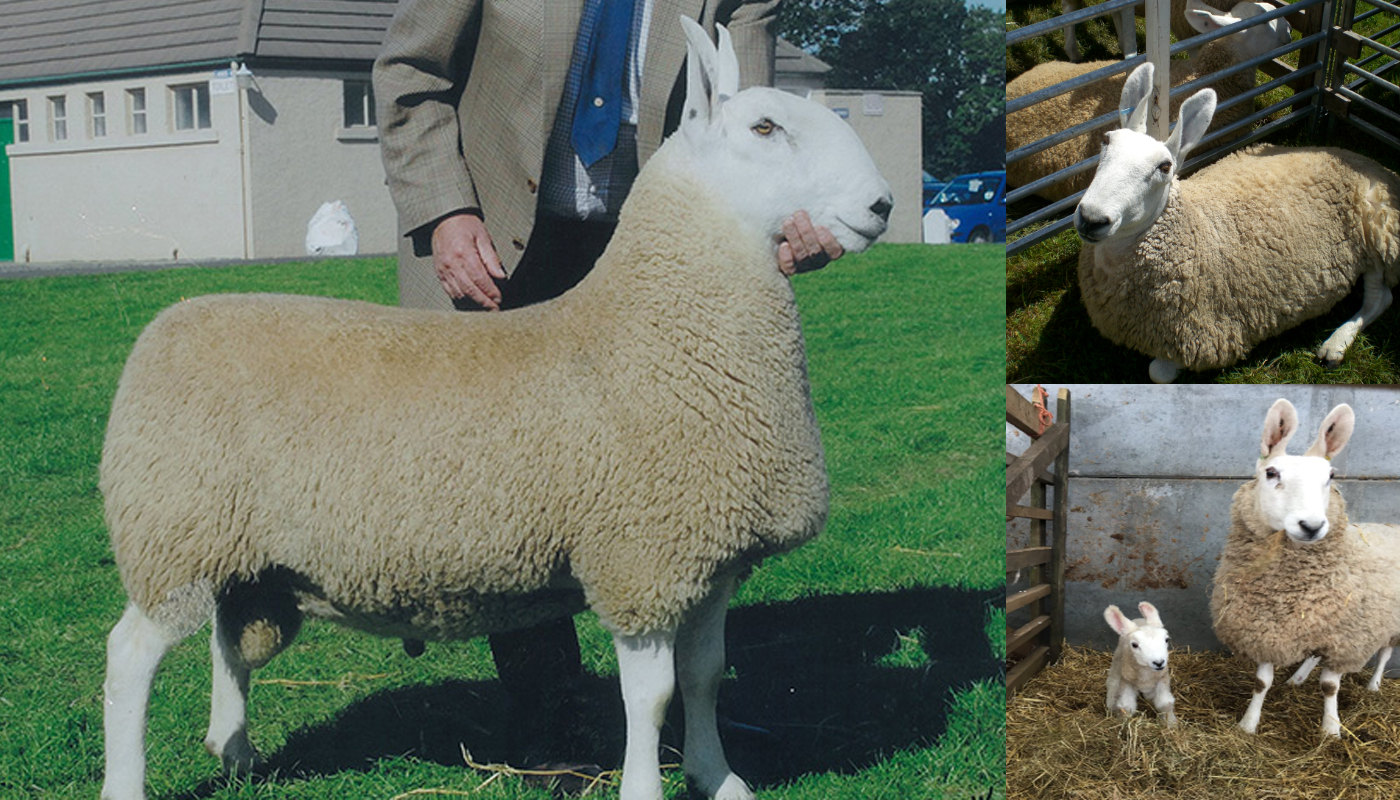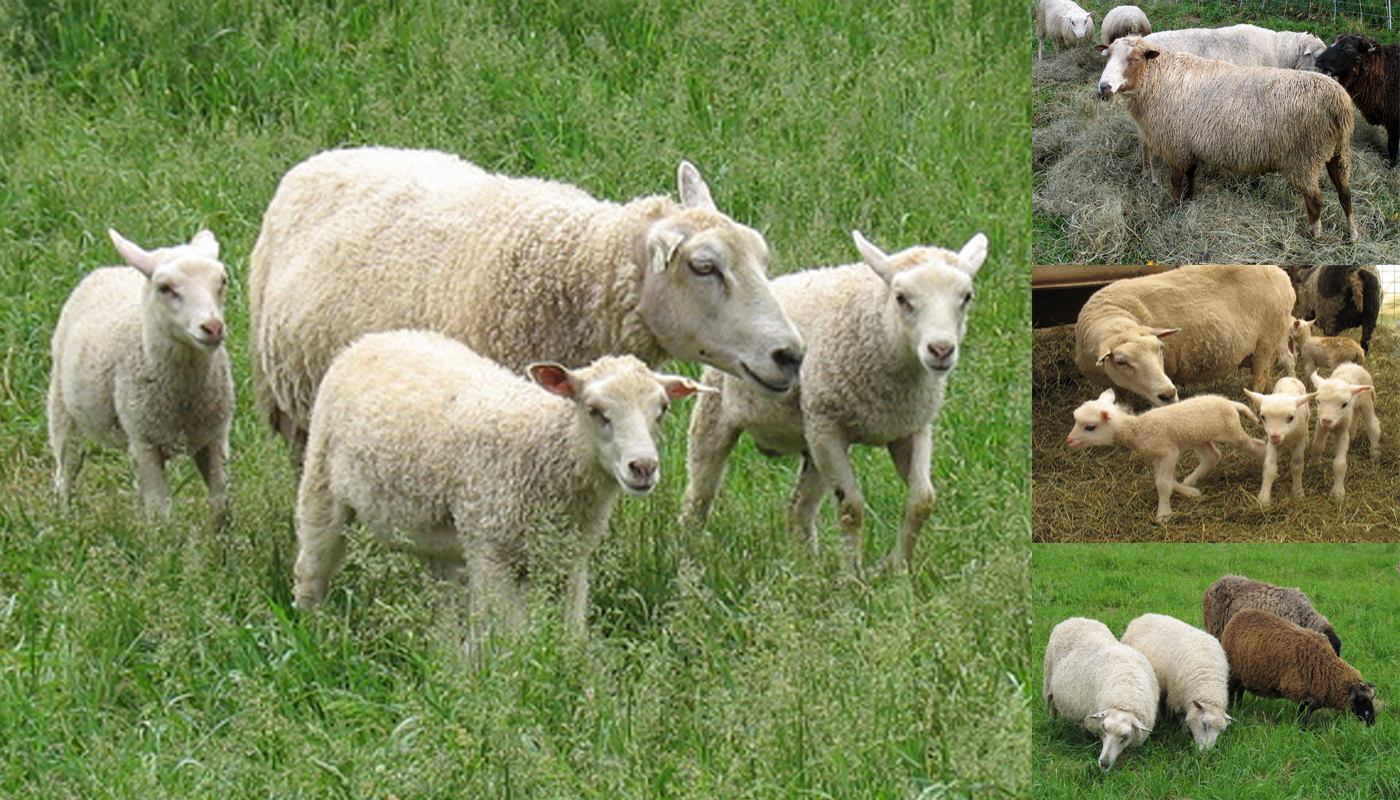
The Dorset Horn sheep have been dubbed as “the breed for all seasons and for all reasons”.
They are highly adaptable and can be used in most sheep enterprises such as that of the full-time commercial farming enterprises to that smaller farm flock operations.
They were developed to be a sheep that were versatile and could thrive in all climates, environments and under all kinds of conditions.
They are a medium sized sheep with a compact frame and good disposition.
DORSET HORN SHEEP QUICK PROFILE OVERVIEW |
|
|---|---|
| The Dorset Horn sheep breed is versatile, adaptive, calm and docile. | |
| Country of Origin: | United Kingdom |
| Other Names: | Dorset or Dorset Horned |
| Breed Size: | Medium |
| Main Purpose: | Meat |
| Can be used for | Breed, Meat, Wool **LSC (Landscape Management) |
| Temperament: | They are a calm, docile, easy to handle and easy to train breed of sheep |
| Ideal Climate: | Most climates |
| Conservation Status: |
Yes,Listed by the *ALC Threatened. They are also listed with the Rare Breed Survival Trust |
| Health Issues? | No known health issues |
| Good Starter Sheep? | Novice to intermediate level sheep farmer/keepers |
| Sheep Associations: | Continental Dorset Club, Dorset Horn and Poll Dorset Sheep Breeder’s Association and the Rare Breeds Survival Trust |
| Sheep Clubs: | Continental Dorset Club, Dorset Horn and Poll Dorset Sheep Breeder’s Association and the Rare Breeds Survival Trust |
| Note: *ALC stands for American Livestock Conservancy ** LSC stands for Landscape Management – the animal is used for controlling various vegetation growth |
|
PHYSICAL CHARACTERISTICS |
||||||||||||||||||||||||||||||||
|---|---|---|---|---|---|---|---|---|---|---|---|---|---|---|---|---|---|---|---|---|---|---|---|---|---|---|---|---|---|---|---|---|
| The Dorset Horn breed have a clean face open white face with long bodies. Their legs are smooth and clean from the knee down. They have a compact body and long nose and the crown of their heads are usually well covered with wool. | ||||||||||||||||||||||||||||||||
| Color(s): | White | |||||||||||||||||||||||||||||||
|
||||||||||||||||||||||||||||||||
EWE BREEDING & MILKING INFORMATION |
|
|---|---|
| The ewes can breed twice in a year with around three lambing’s in a two-year cycle being the most common breeding program for the Dorset Horn ewes. They have an excellent lambing rate, are excellent mother and have an abundance of milk for their young. | |
| Breeding Period/cycle: | Usually lasts 16 to 59 hours |
| Estrous cycle: | Ave. 17 days/15 to 20 days |
| Gestation Period: | Usually, around 149 to 155 days but most gestation is 152 days |
| No. Lambs/Litter: | 1 to 2 (twins) |
| Lactation Period: | Usually, around 150 to 240 day but most are milked for 180 days |
| Milking From: | 4 to 6 weeks after lambing |
| Milk Quality: | Good, Quantity: Enough to wean lambs , Per: Lactation period |
| Milk Ideal for: | Lambs |
| You may Also Like: | 10 Best Sheep Breeds for Milk |
SHEEP MEAT PRODUCTION INFORMATION |
||||||||||
|---|---|---|---|---|---|---|---|---|---|---|
| The Dorset Horned sheep breed produces a premium grade lamb, mutton and hogget. Their lambs are quite fast growing and have a good carcass. They lambs can get up to 16 kgs by their 10th week of age. | ||||||||||
| Meat Production: | Yes, Quality: Excellent | |||||||||
|
||||||||||
| You may Also Like: | 11 Best Sheep Breeds for Meat Production | |||||||||
SHEEP WOOL PRODUCTION INFORMATION |
||||||||||||||||
|---|---|---|---|---|---|---|---|---|---|---|---|---|---|---|---|---|
| The Dorset Horn sheep produces a fine quality of wool per year. The have a fine down type wool that is dense and firm to handle. It is very popular with hand spinners. The fleece has a good staple with is compact and firm to the touch. | ||||||||||||||||
| Wool Production? | Yes, Quality: Medium grade wool with a spinning count of 46s to 58s | |||||||||||||||
| Wool is used to Produce: | Ideal and in demand for hand spinners. They are used for other garments, wools, etc. | |||||||||||||||
|
||||||||||||||||
| You may Also Like: | 18 Best Wool Producing Sheep Breeds | |||||||||||||||
GOOD TO KNOW ABOUT THE DORSET HORN SHEEP |
|
|---|---|
| A few more interesting facts to know about the breed | |
| Child-Friendly? | No livestock should have unattended children around them |
| Landscape Management? | They are great at grazing and foraging and will keep the bush/grass growth down |
| Where to buy them? | Please refer to the Continental Dorset Club, Dorset Horn and Poll Dorset Sheep Breeder’s Association and the Rare Breeds Survival Trust |
GENERAL INFORMATION
The Dorset sheep breed are best known for the fine “down” type fleece and being able to lamb all year around.
HISTORY
Centuries ago when Spain set out to conquer England, they brought Merino sheep with them for various reasons probably as food, wool and milk source. These sheep were integrated into southwest England where they were crossed with the Horned Sheep breed of Wales.
The result of this cross was a very valuable and desirable white sheep that had excellent meat and wool. The breed quickly spread across Dorset, Devon, Somerset and most of Wales in the United Kingdom.
The Horned Dorset sheep breed was first introduced into the United States of America in 1885 and in 1948 there was a dominant gene for polledness. The polled version of the Horned Dorset fast became the more popular version of the Dorset Horned sheep breed especially in farm flocks.
VIDEO
USEFUL LINKS
- United States Lamb Resource Center
- American Sheep Industry Association
- American Sheep Industry Association List of Breed Associations & Standards
- American Milk Sheep Association
- Dairy Sheep Association of North America
- American Wool Council
- Fur Commission USA
- North American Meat Institute
- American Lamb Board
- National Lamb Feeders Association
- American Livestock Conservancy
- Animal Shelter (ASPCA)
- American Veterinary Medical Association
- American Animal Welfare Society
- American Animal Control
- American Animal Husbandry Society
- United States Department of Agriculture
 Merino Sheep Breed – Everything You Need to Know
Merino Sheep Breed – Everything You Need to Know Barbados Black Belly Sheep Breed – Everything You Need to Know
Barbados Black Belly Sheep Breed – Everything You Need to Know Teeswater Sheep Breed – Everything You Need to Know
Teeswater Sheep Breed – Everything You Need to Know Top 20 Best Native British Sheep Breeds
Top 20 Best Native British Sheep Breeds Norfolk Horn Sheep Breed – Everything You Need to Know
Norfolk Horn Sheep Breed – Everything You Need to Know Romney Sheep Breed – Everything You Need to Know
Romney Sheep Breed – Everything You Need to Know 18 Best Wool Producing Sheep Breeds
18 Best Wool Producing Sheep Breeds 10 Hair Sheep Breeds
10 Hair Sheep Breeds Border Leicester Sheep Breed – Everything You Need to Know
Border Leicester Sheep Breed – Everything You Need to Know St. Croix Sheep Breed – Everything You Need to Know
St. Croix Sheep Breed – Everything You Need to Know Hampshire Sheep Breed – Everything You Need to Know
Hampshire Sheep Breed – Everything You Need to Know Finnsheep Sheep Breed – Everything You Need to Know
Finnsheep Sheep Breed – Everything You Need to Know